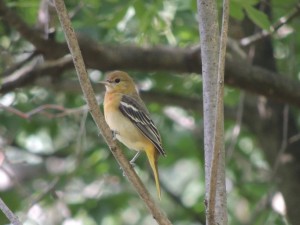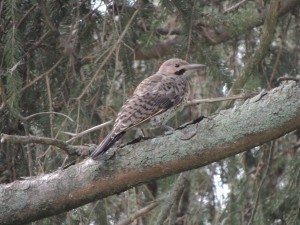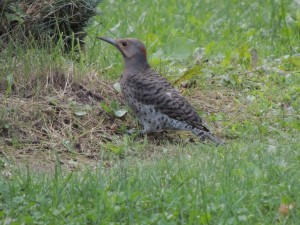14 August 2013. Burlington ON. In the past 24 hours a strong cold front swept down from the north giving us our first hint of the leaf-drop months ahead. It’s not that it’s suddenly turned cold, it’s just relatively colder than the past month or two, cool enough that I bring my pots of orchids indoors for the night. As these cold fronts sweep through, starting now as summer wanes and continuing into November, they trigger a surge of birds, as if they’ve been cued that it’s time to clear out. I noticed the first responders yesterday afternoon, I stepped out of the house to investigate the loud shrieking of a Merlin, an unusual bird here at any time, and looking up saw swirls of southwestward bound Chimney Swifts swooping and tumbling in the buffeting winds.
One of the best spots to see fall migrants around here is a certain lakeside resting-place called Woodland Cemetery. For many the chance will surely come to spend a lot of time in a cemetery and I’m not trying to rush anyone into it, but in late summer and fall a quiet hour or two here will reward you with some good birding. I went there this morning.



I saw singles of Blue-gray Gnatcatcher, Yellow Warbler and Red-eyed Vireo, any of which could just as easily have been local birds, not migrants. I could hear a bit of commotion and soon came across a couple of family groups: three or four Baltimore Orioles, mostly juveniles although one of the group was still trying to sing so perhaps it was an adult male, and as many as five Northern Flickers. I managed to get these photographs, (click to enlarge) both of youngsters I think: the oriole is probably a female, determined by the orangey wash being very light across its middle and strongest on its upper breast, and also its scapular (or shoulder) feathers are brownish-grey with dark centres; The young male flicker has still not developed all of his flight feathers, some of them are still a little truncate and his red patch in the back of his head is rather muted. The malar stripe (moustache) makes it a male.
There will be many more days trying to get glimpses of departing birds, the bird population is at its highest right now with the young of the year included. But the long journey south, predators along the way and for some the winter scarcity of food will weed out many of them before next year’s breeding season.